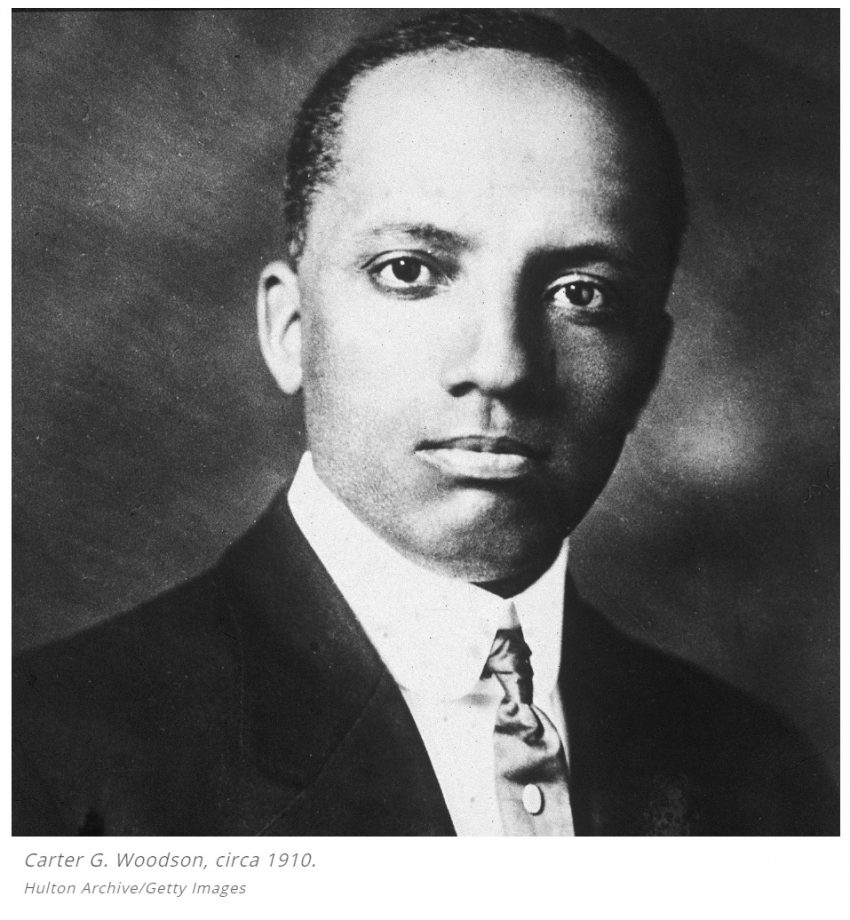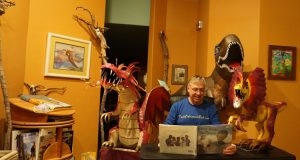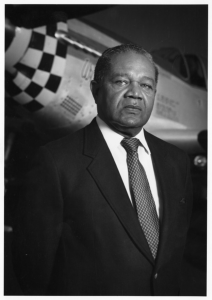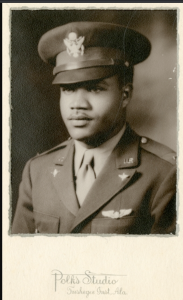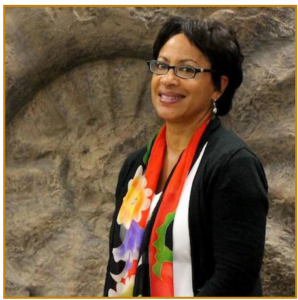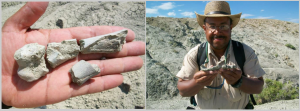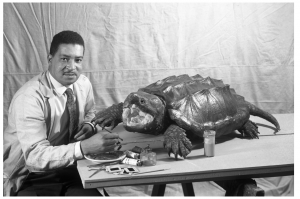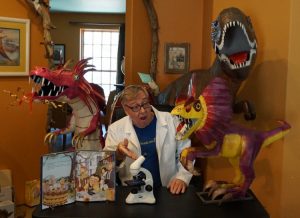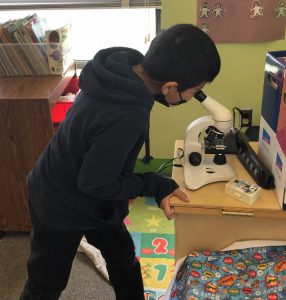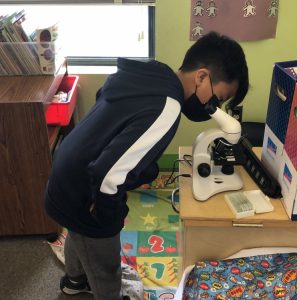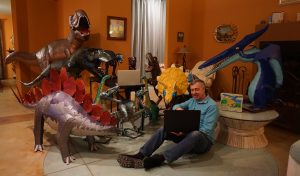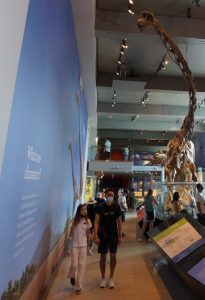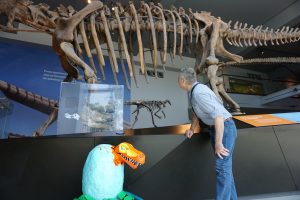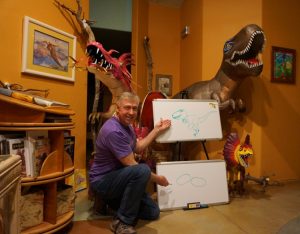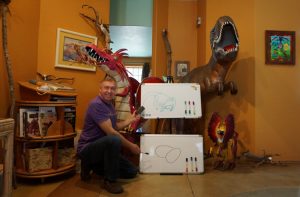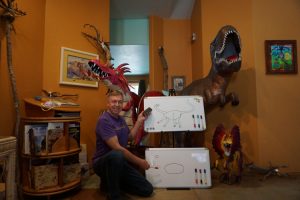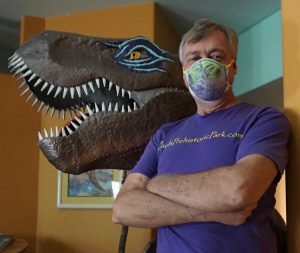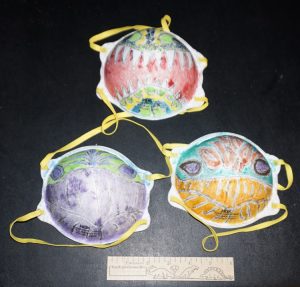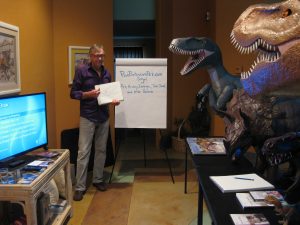Carter G. Woodson (1875 – 1950)
Black Educators & Black United Students at Kent University first proposed Black History Month at the University in February 1969! The first celebration at Kent University a year later from January 2 to February 28, 1970. In 1976 President Gerald R. Ford officially recognized Black History Month. In 1986, Congress passed Public Law 99-244 designating February 1986 National Black History Month. The law directed the President to issue a proclamation calling on the people of the United States to observe February as Black History Month with the appropriate ceremonies & activities. But did you know that it was Carter G. Woodson, who first set out in 1926 to designate a time to promote and educate people about Black History & Culture? I’m embarrassed to say I just learned of this from one of this month’s readingtokids.org books – “Carter Reads the Newspaper” by Deborah Hopkinson. You’re never to old to learn something new! Check Out Your Library to Discover What You have been missing! The Natural History Museums are also good resources to uncover the past and many have Special Exhibits to Celebrate Black History Month.
Paleontologists have been studying fossils for around 200 years. Probably earlier before the title was official. Museums have basements full of fossils yet to be unwrapped for display. As new Paleontologists join the ranks, they often checkout these basements full of treasure. A fresh set of eyes can provide new perspectives that can lead to new discoveries and ideas.
Louis R. Purnell became the First African American Curator at the Smithsonian in 1980, blazing a trail for those who would follow! Before Life at the Museum, Louis R. Purnell lived a remarkable Life. His career began in the skies above Italy & Germany, where he flew 88 combat missions as an original Member of the Tuskegee Airmen. After the war, Louis found a calling at the National Museum of Natural History. He traveled world’s oceans collecting marine specimens, taught himself geology & paleontology and wrote an invaluable catalog of Nautiloids & Cephalopods that is still used today. In 1968, a year before the Moon Landing, Louis started working at the National Air & Space Museum. He became one of the World’s leading authorities on the History of Spacecraft & Spacesuits! See below links for full article at the Smithsonian, History of the remarkable Tuskegee Airmen and the National Park dedicated to them.
https://siarchives.si.edu/history/featured-topics/African-Americans/louis-purnell
https://www.tuskegee.edu/support-tu/tuskegee-airmen
https://en.wikipedia.org/wiki/Tuskegee_Airmen
https://www.nps.gov/tuai/index.htm
Note: The Prehistoric Pals & I were educated about Louis R. Purnell, the First African American Paleontologist per the Smithsonian shared in my post January 16, 2021 “Fossils”.
Making History & Inspiring the Future History Makers, Dr. Lisa White a Micropaleontologist (studies fossils at a microscopic level). Currently Assistant Director Education & Outreach at the University of California Museum of Paleontology. After 22 years at San Francisco State University. Where she held positions of Professor of Geosciences & Associate Dean of the College of Science & Engineering. Dr. Lisa White taught undergraduate classes in paleontology, historic geology, oceanography and guided research projects with graduate students in Miocene diatoms (single celled alga) of the Monterey Formation of California and fossil cold seep assemblages (sorry, I looked it up and can’t come up with a simple definition. I’m not sure I even understood what I read. We’ll just have to ask Dr. White.) in the Franciscan Complex. She continues to Reach Out to the Community with Programs to Inspire Kids with Science. For more information on Dr. Lisa White and recent published articles visit https://ucmp.berkeley.edu/people/lisa-white/
Sharing History & Encouraging Youth, David Wilcots a Geologists, Paleontologist & Artist from Philadelphia, Pennsylvania, USA. David has over 20 years experience working as an Environmental Geologist and over 30 years experience collecting Fossils. David was able to spend 4 days on the excavation site in Northeast Montana with paleontologist Gregory Wilson on the Tufts – Love Tyrannosaurus Rex which is now on display at the Burke Museum in Seattle, Washington. This specimen is named after the Burke Museum Volunteers that discovered it Jason Love & Luke Tufts. David’s Favorite Dinosaur – Kentrosaurus! Visit David’s website www.dinosaursfa.com which he established in 2014 to make Paleontology available to young people. One of his primary goals is to demonstrate that Paleontology is more than Dinosaurs. His website features Girls & Boys of All Colors in an Inclusive Environment Working in the Field, to allow All Viewers to see Themselves in this Environment.
The Field Museum of Chicago’s first African American Taxidermist was Carl Cotton (1918 – 1971) from 1947 until 1971. Taxidermists prepare animal skins for display. They create the internal structures from various materials to attach the skins. Insects are the only animal that every part is preserved. Plants & Fish and some other animals are cast vs. using the actual skin of the animal. Carl’s biggest impact was creating the Birds of the Nile Marsh Diorama. Twenty-five percent of the Birds in the Museums Exhibits were prepared by Carl Cotton!
A Wonderful article on Carl Cotton by check out https://www.fieldmuseum.org/blog/finding-carl-cotton
Note: Our first report on these three trailblazers posted February 20, 2021 “Black History Month – Paleontologists & Taxidermists”
www.Readingtokids.org has a number of eBooks and YouTube videos with Authors Reading their Books. Craft ideas are demonstrated online as well! They’re a Great Organization to Volunteer! Check them Out!
February’s Books – Kindergarten: “The Rooster Who Would Not be Quiet” by Carmen Agra Deedy. A great lesson for young and older. First Grade: “Carter Reads the Newspaper” by Deborah Hopkinson. Discover the founders of Black History Month! Second Grade: “Sing with Me: The Story of Selena Quintanilla” by Diana Lopez. Third Grade: “Mario and the Hole in the Sky: How a Chemist Saved Our Planet” by Elizabeth Rusch. First Mario helped us to start healing the ozone layer. Then he educated us on saving the Planet from Global Warming! Fourth Grade: “Through My Eyes” by Ruby Bridges and Margo Lundell, In November of 1960, all of America watched as a tiny six year old black girl, surrounded by federal marshals, walked through a mob of screaming segregationists and into her school. Ruby Bridges chronicles each dramatic step of this pivotal event in history through her own words. Fifth Grade: “Women in Sports: 50 Fearless Athletes Who Played to Win” by Rachel Ignotofsky.
So Many Wonderful Stories to Inspire Us! The Prehistoric Pals & I are Ready to Read! Are You?
Mario Molina inspired us to make Our Own Discoveries through the Lens of a Microscope!
Stay Tuned for More Trailblazers, Kevin’s New Perch, Crafts & Dinosaur Fun Facts!
Here are 3 of my favorites Museums. Remember Social Distancing & Masks to keep You & Others Safe while Everyone Enjoys Their Learning Experience. Consider a Membership with the Museum. In addition to Supporting Their Valuable Work there are Benefits to You. Special Preview Events for Members Only as well as Virtual Access Exclusive for Members. For more information and access to general public eLearning check out the links below.
The Natural History Museum of Los Angeles County www.nhm.org under Research & Collections / Digitized Collections will allow you to browse their Collections. Check out the latest Activities on their site.
The American Natural History Museum www.amnh.org You will find eLearning for Families, Students & Educators. Explore the Museum Virtually. Check Out SciCafe: Video Talks and Meet the Icons: Stories behind the Exhibits! There are Video Series covering Behind the Scenes at the Museum with Space & Dinosaur Explainers.
Chicago’s Field Museum www.fieldmuseum.org You can talk to “Maximo the Titanosaur” online, Yes Really! Visit Sue the largest T-Rex discovered! Check Out “Brain Scoop” and the Learning Resources – many are also in Spanish.
Check Out Your Libraries eBooks. My local Library has over 900 eBooks on Dinosaurs! Here are four books for Drawing Dinosaurs that you might find at your Library. Ask your Librarian about others.
1-2-3 Draw Dinosaurs and other Prehistoric Animals A step by step guide by Freddie Levin (2001)
Draw 50 Dinosaurs and other Prehistoric Animals by Lee J. Ames (1977)
Draw it Dinosaurs by Patricia Walsh (2006)
I Can Draw Dinosaurs by Terry Longhurst (2003)
Stay Safe & Well.
Please Remember to Wear Masks & Social Distance as Appropriate Not everyone has been Vaccinated. And even vaccinated many Young & Old have compromised immune systems. Protect Yourself, Friends, Family & Everyone You Pass!
Thank You!
I used watercolors to make Dinosaur Designs on my N95 Masks. I couldn’t get a yes or no from 3M regarding any impact this might have to the effectiveness of the mask. Many Museums sell Dinosaur Themed Masks Check them Out!
“Encouraging the Appreciation of Art and Education through the Inspiration of Dinosaurs”
Paul & Prehistoric Pals
Your feedback is appreciated, comment below or email:
Thank you!
